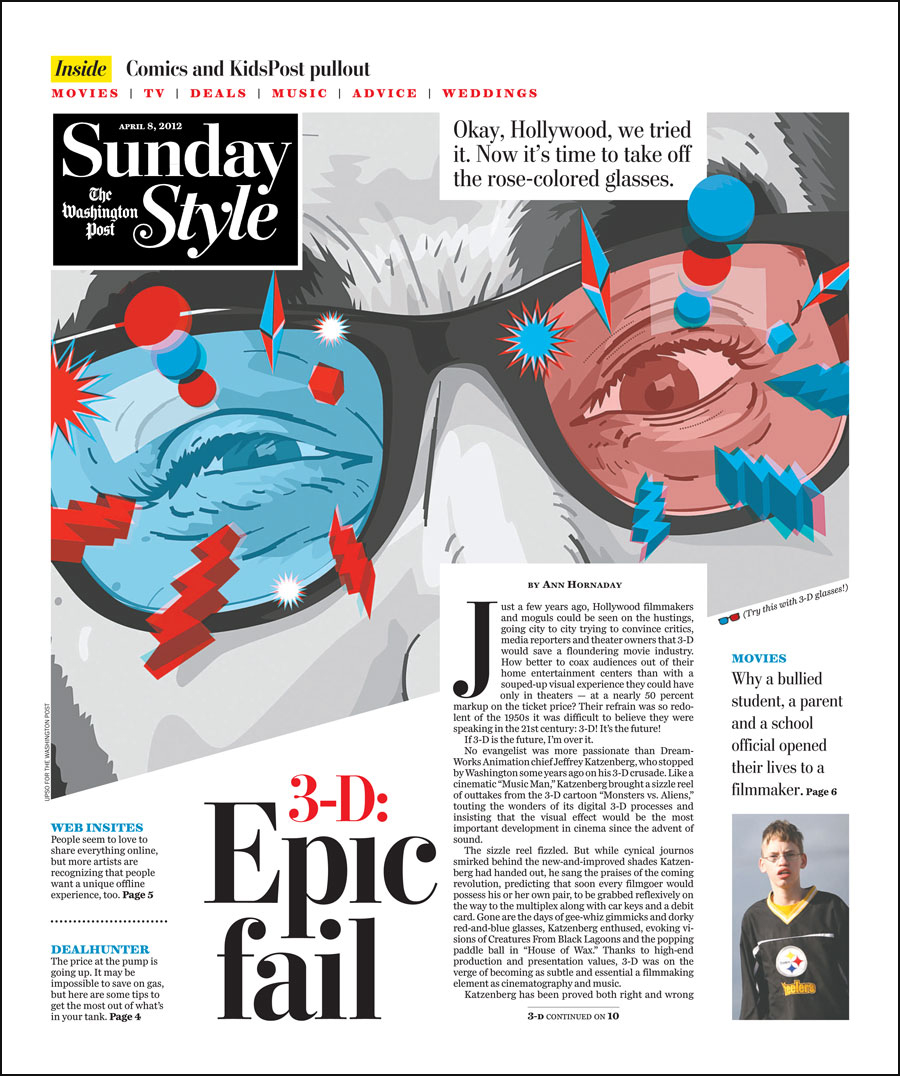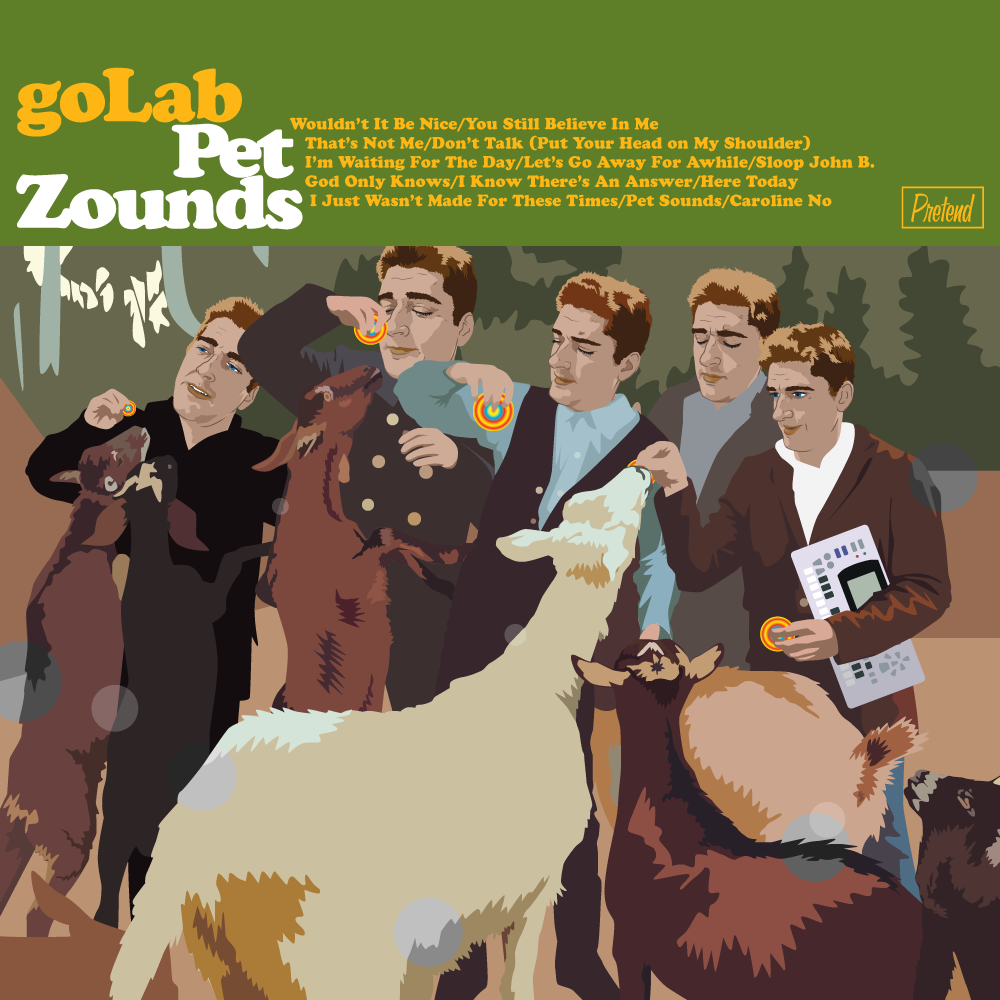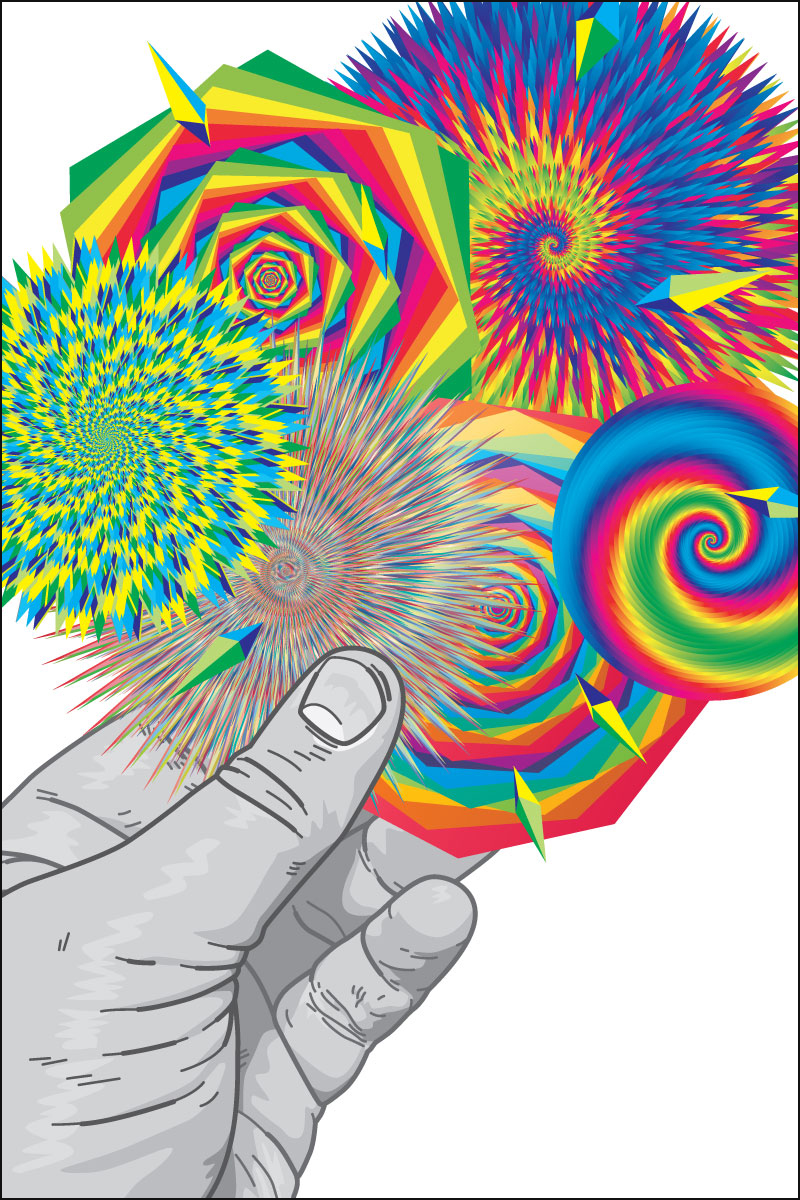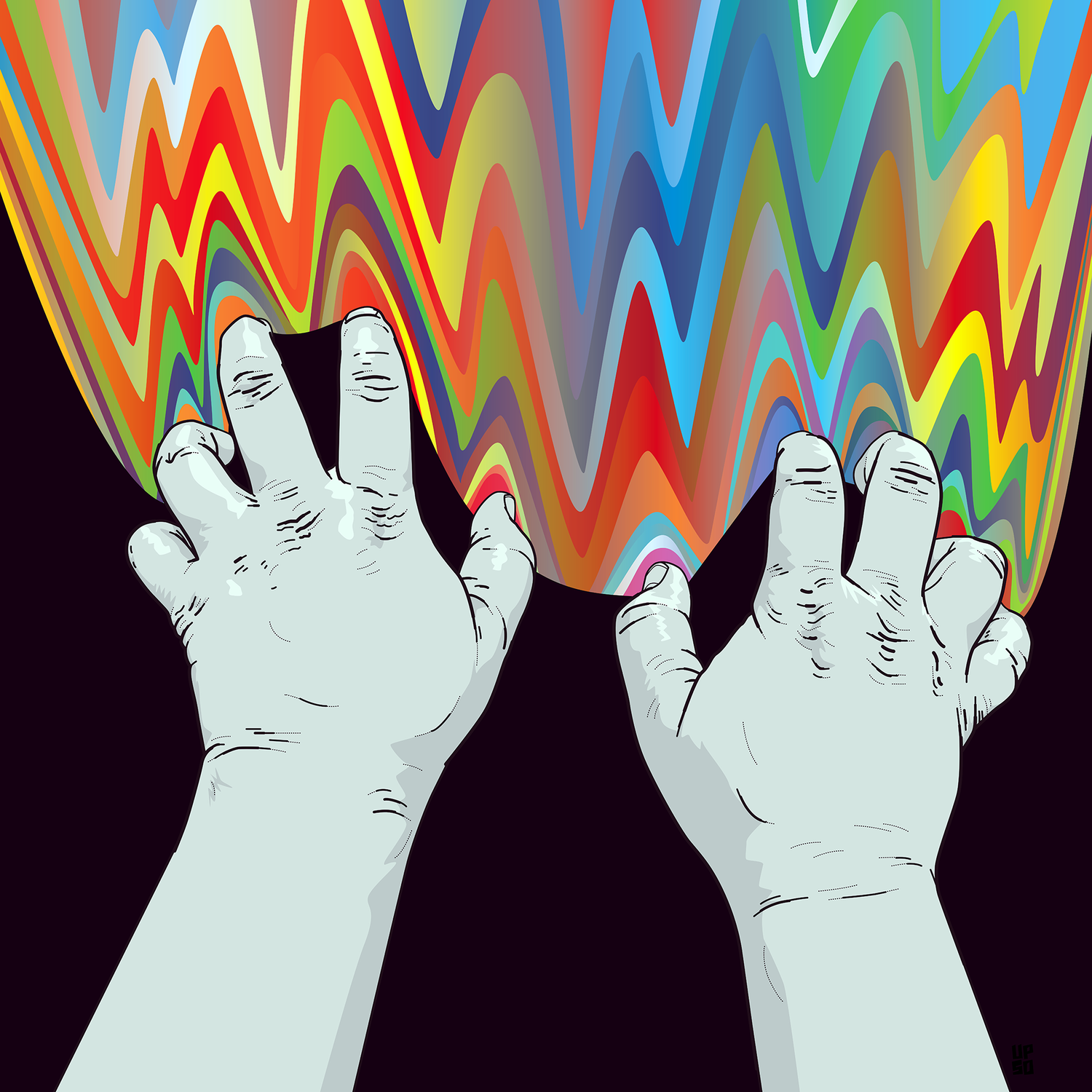Alumni Update: Interview with Dustin Hostetler
Posted in Alumni, News and tagged Alumni, Illustration, Upso. Bookmark the permalink.
Dustin graduated December 2000 with a BFA in Graphic Design and minor in printmaking. He is currently working as Design Operations Director at Freeman, and on Bruce Mau’s team (More about Bruce here, and his work here.) View Dustin’s work online at dustinhostetler.com
What advice would you give for students currently in the program?
You should grow your sense of empathy. Try new things. Take a ceramics class. Learn how to code. Join a band. Get a job at a record store. Join a strange club. Try to get as many different perspectives as possible, to help inform your work as a designer.
Why did you choose BGSU to study design?
When I graduated high school, I thought I wanted to be a fine artist, so I went to the Art Institute of Chicago. It was a brilliant place to be a young person, but offered very little focus or guidance. You didn’t have to declare a major, and it was pass fail (no grades) so a scatter brain person was able to just bounce around with very little reason to focus. That was bad for me.
After two years in Chicago, I reconsidered where I was going and my focus went back to BGSU. My grandfather graduated from BG as did my parents. Specifically, my mother was a design grad from BG, and for a while was a design professor at BG. She made a point that design was a form of art. So, I could still become an artist when I grew up, but with better job prospects.
What is it that you want to accomplish with your designs? What is your role within the design world?
Whether abstract or literal, I want to tell a story with everything I design. In the actual design world, I’m not really sure what my role is! These days, I’m much more interested in celebrating other people’s work and making connections between different disciplines than being focused on myself.
Has BGSU helped shape your perspective on what it means to be a designer? What about BGSU’s Graphic Design program specifically has enabled you to become the designer that you are today?
I think BGSU really set me up to be good at the foundational elements of design. Understanding how to use color, proportion, typography, etc. are critical to GOOD design, and I think BGSU does a really great job instilling that. To this day, I struggle not using a grid, as the notion of the grid was burnt into my brain at BG.
That said, once you have a great understanding of the “rules”, it’s much easier to break them!
Regarding your zine Faesthetic, what made you want to create it, what do you want people to get out of the artwork within the magazine, and what is the story behind the name?
There is a very distinct connection to Faesthetic and my time at BGSU. For my senior thesis project we were tasked with either re-imagining an existing brand or creating a new one. At the time (and continuing today) I was obsessed with magazine design, so I decided to create my own.
The name Faesthetic means “The Fast Aesthetic” which for me means “Life in the age of the Internet.” The notion being, things are flying by us so fast that I thought it was important to document a moment in time.
Conceptually if you look at an issue of Faesthetic from 2002, it REALLY looks like 2002 from a style point of view. Same from an issue published in 2010. It’s an intentionally dated time capsule of artists I’ve discovered through the internet.
Each issue has a color theme (for example: black, white and yellow) as well as a conceptual theme (like, ghost stories) that force the contributors to not only create new, issue-specific work, but also contributes to a unifying theme for the issue.
Why do you think it’s important for graphic designers to design personal works outside of working for clientele?
To grow as a designer, you need to try new things. You need to experiment. Clients are typically looking for short term solutions to identified problems. For example, the request “I need a new website and I think I want it to look like this” or “I need a new logo and I think I want it to look like this”. Simply following those directives will push you into a very obvious solution, which doesn’t push things forward.
But, if you’re constantly experimenting with personal projects, projects for friends, etc., you’ll likely take more risks. You’ll discover new ways of doing things. When a client approaches you with “I need a new logo and I think I want it to look like this” you can respond with “Ok, but what about this instead?”, and help grow their brand vision. And at the same time, you grow your own.
You have worked with a pretty diverse collection of clientele over the years, what has been some of the main takeaways you have from working with so many different kinds of people? What are some of the similarities and differences between working with something like American Eagle to working with Mountain Dew or Toshiba?
Whether I am working on a commissioned illustration, a logo or a poster design, the general work flow is usually the same for me. The big difference is who the audience is. Clients can be WILDLY difficult to completely wonderful, and that can really affect not only the process but the final outcome.
For my bigger clients, they typically understand how to work with creative vendors, where the smaller “mom and pop” clients often have no clue what the creative process is, its value in business, or how much it costs. So I see it as less about comparing brands to other brands, and more about comparing size of business and scope of work… if that makes sense?
What are some of the main components within your design process? How has this process evolved over time?
As a design thinker, it’s really important to identify what the opportunities might be, before I start working. What I’ve learned over time is it’s also super important to debrief after a project is over, and learn from any mistakes or hiccups there might have been along the way.
I really like to get all of my elements together before I actually start designing. So color, type, source images, etc., are all brought together to see what sort of conversation the different elements have together.
In the past, I would always thumbnail sketch things out first, before I decided on a layout. These days I do a lot of the initial sketching in my head and then just figure out how to make it happen on the computer.
What goals do you have for the future? What things do you still have to accomplish?
As I’ve done for the past 20 years, it’s my hope that the next 20 are filled with as many different types of projects and experiences as possible. Since I graduated from BGSU, I’ve been in a touring band, started a record label, created an international art zine, founded a design studio, co-owned a family restaurant, illustrated for countless magazines and brands, curated a line of t-shirts for Threadless, worked at a cloud-computing startup, co-founded a Chicago based co-working ‘maker space’, and now work in corporate America as a “Design Thinker”. Somehow, all of these things inform each other, and I am looking forward to more problems to solve… going forward!
Interviewed by Alex Hull



